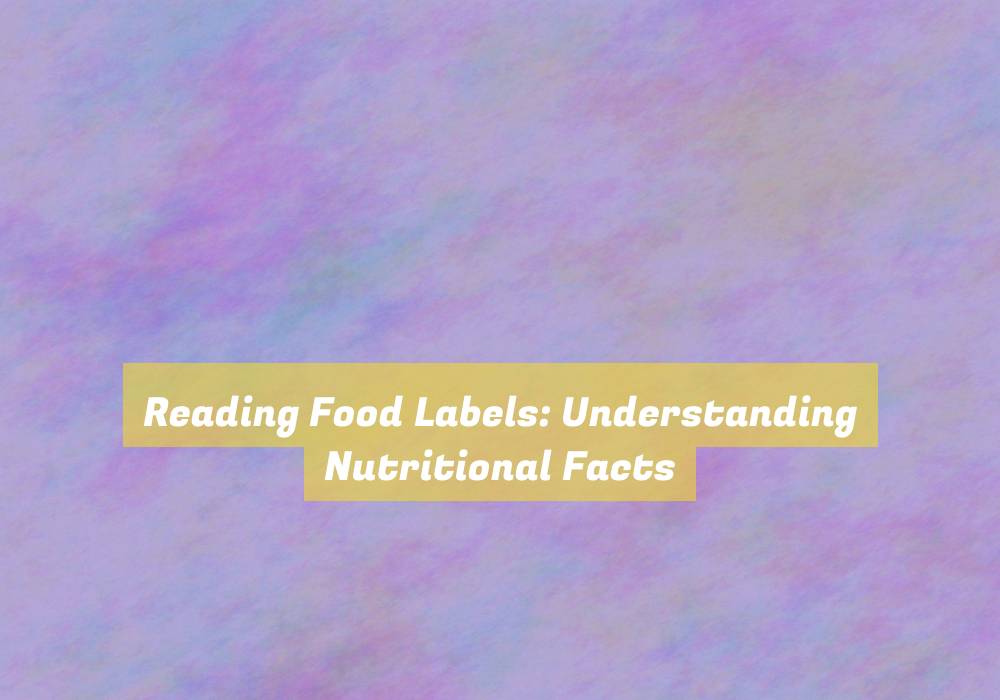Reading Food Labels: Understanding Nutritional Facts
When you pick up a snack bar at the grocery store, do you know how to decipher the nutritional information on the back? Understanding food labels is essential for making informed decisions about the foods you eat. But itG??s not always as straightforward as it seems.
Before you take another bite, wouldnG??t you like to know how to decode serving sizes, calorie counts, and key nutrients to make healthier choices for yourself and your family?
Importance of Nutritional Facts
Understanding the importance of nutritional facts is crucial for making informed and healthy food choices. When you pay attention to the nutritional information on food labels, you gain valuable insight into what youG??re putting into your body. This knowledge empowers you to select foods that align with your dietary goals and nutritional needs. By being aware of the nutritional content, you can make better decisions about portion sizes, calorie intake, and the balance of essential nutrients like carbohydrates, proteins, fats, vitamins, and minerals.
Moreover, understanding nutritional facts can help you manage or prevent certain health conditions. For instance, if you have high blood pressure, diabetes, or food allergies, knowing the nutritional content of the foods you consume allows you to avoid ingredients that may exacerbate these conditions. This level of awareness enables you to take control of your health and well-being by choosing foods that support your overall nutritional requirements and health objectives.
In essence, paying attention to nutritional facts isnG??t just about counting calories or avoiding certain nutrients; itG??s about equipping yourself with the knowledge to make informed choices that contribute to your overall health and vitality.
Decoding Serving Sizes
Now that you grasp the importance of nutritional facts, letG??s tackle the decoding of serving sizes.
Understanding serving sizes is crucial for accurately interpreting nutritional information. The serving size isnG??t just a suggestion; it represents the amount typically consumed at one time and allows for easy comparison between similar products.
When examining serving sizes, be mindful of the total servings per container. This will help you calculate the total nutritional intake if you consume the entire package. Some packages may appear to contain a single serving but actually hold multiple servings.
Pay attention to the serving size in grams or ounces, as well as the number of servings per container. Keep in mind that your actual consumption may differ from the serving size listed, so adjust the nutritional values accordingly.
Moreover, consider your own dietary needs and habits when interpreting serving sizes. As you become proficient in decoding serving sizes, youG??ll make more informed decisions about the foods you consume, ultimately contributing to a healthier lifestyle.
Understanding Calorie Counts
Assessing calorie counts empowers you to make informed choices about your food consumption. Understanding calorie counts is essential for managing your weight and overall health. When reading food labels, the calorie count tells you how much energy youG??ll get from a serving of that food. This information helps you keep track of your daily calorie intake and manage your weight effectively. When comparing similar products, the calorie count can guide you in choosing the option that aligns with your dietary goals.
ItG??s important to note that not all calories are created equal. The source of the calories matters. For instance, 100 calories from a sugary beverage will affect your body differently than 100 calories from a serving of vegetables. Therefore, understanding calorie counts can help you make healthier choices by focusing on nutrient-dense, lower-calorie foods.
Remember to consider serving sizes when interpreting calorie counts. A food item may appear to have a low calorie count, but if the serving size is small, you might end up consuming more calories than you realize. Pay attention to portion sizes to ensure youG??re accurately assessing your calorie intake.
Analyzing Key Nutrients
Consider the importance of analyzing key nutrients to make informed decisions about your dietary intake and overall health.
When reading food labels, itG??s crucial to pay attention to key nutrients such as carbohydrates, proteins, fats, vitamins, and minerals.
Carbohydrates provide energy for your body, but itG??s important to differentiate between complex carbohydrates, which are healthier, and simple carbohydrates, which can cause spikes in blood sugar levels.
Proteins are essential for building and repairing tissues, and they also play a role in hormone and enzyme production.
Fats are important for energy, nutrient absorption, and protecting your organs, but itG??s essential to focus on healthy fats like monounsaturated and polyunsaturated fats.
Additionally, vitamins and minerals are crucial for various bodily functions such as immune system support, bone health, and energy production.
Understanding the significance of these key nutrients will help you make informed choices about the foods you consume, ensuring that your body gets the essential components it needs to function optimally.
Conclusion
Now that you understand how to read food labels, you can make better choices for your health.
Pay attention to serving sizes, calorie counts, and key nutrients to make sure youG??re getting the right balance of nutrients in your diet.
With this knowledge, you can take control of your eating habits and make informed decisions about the food you consume.
Keep reading those labels and stay healthy!





